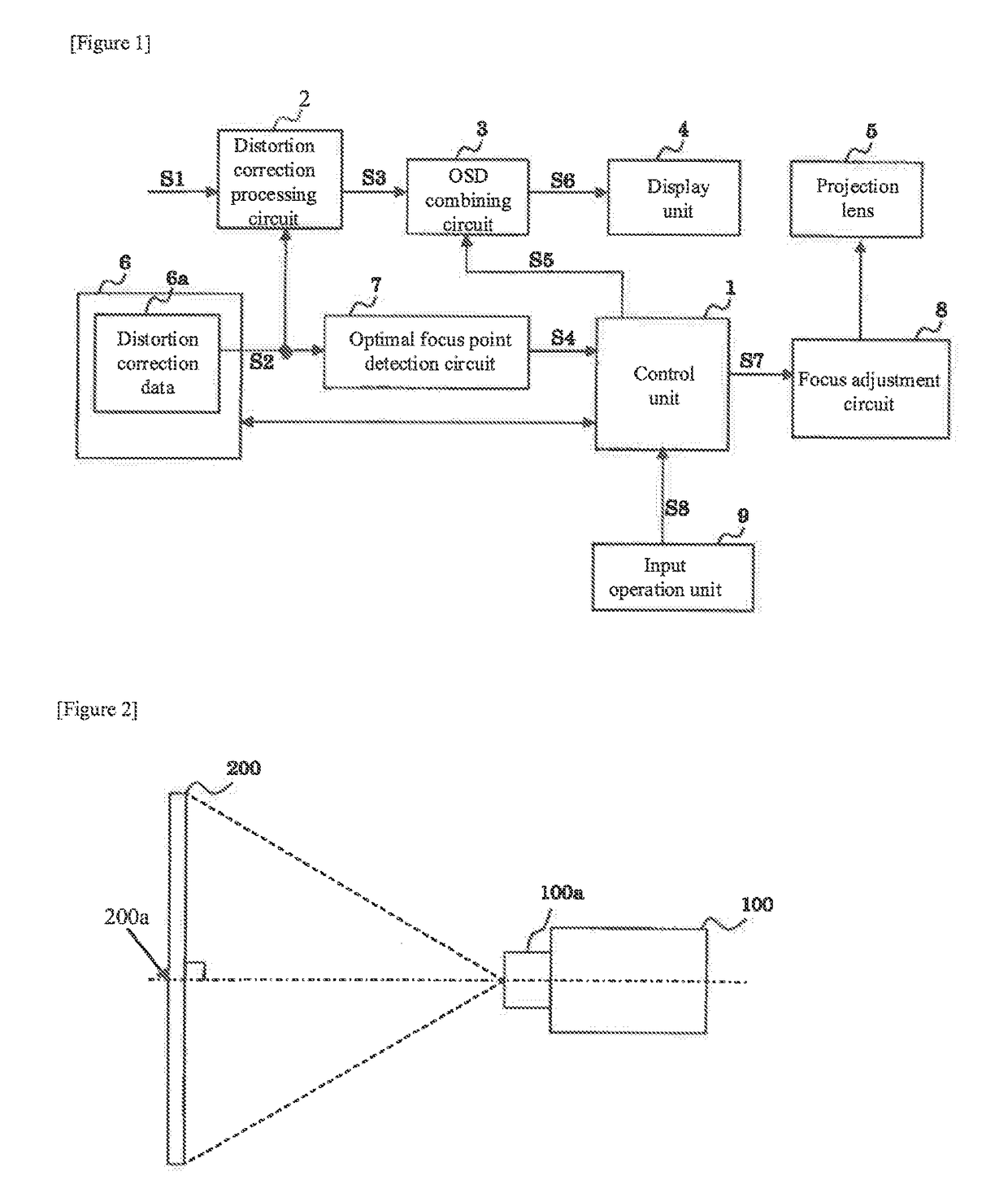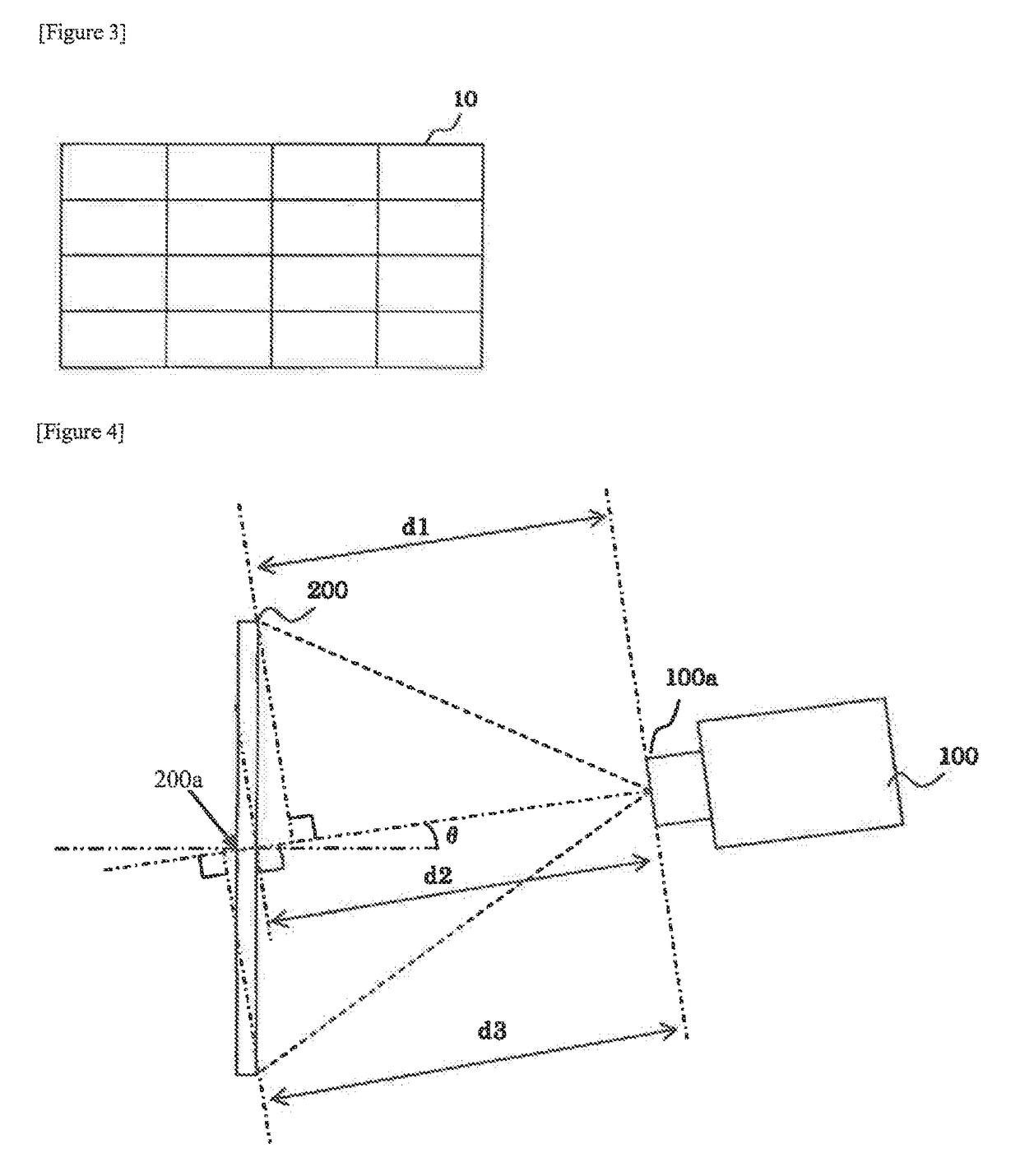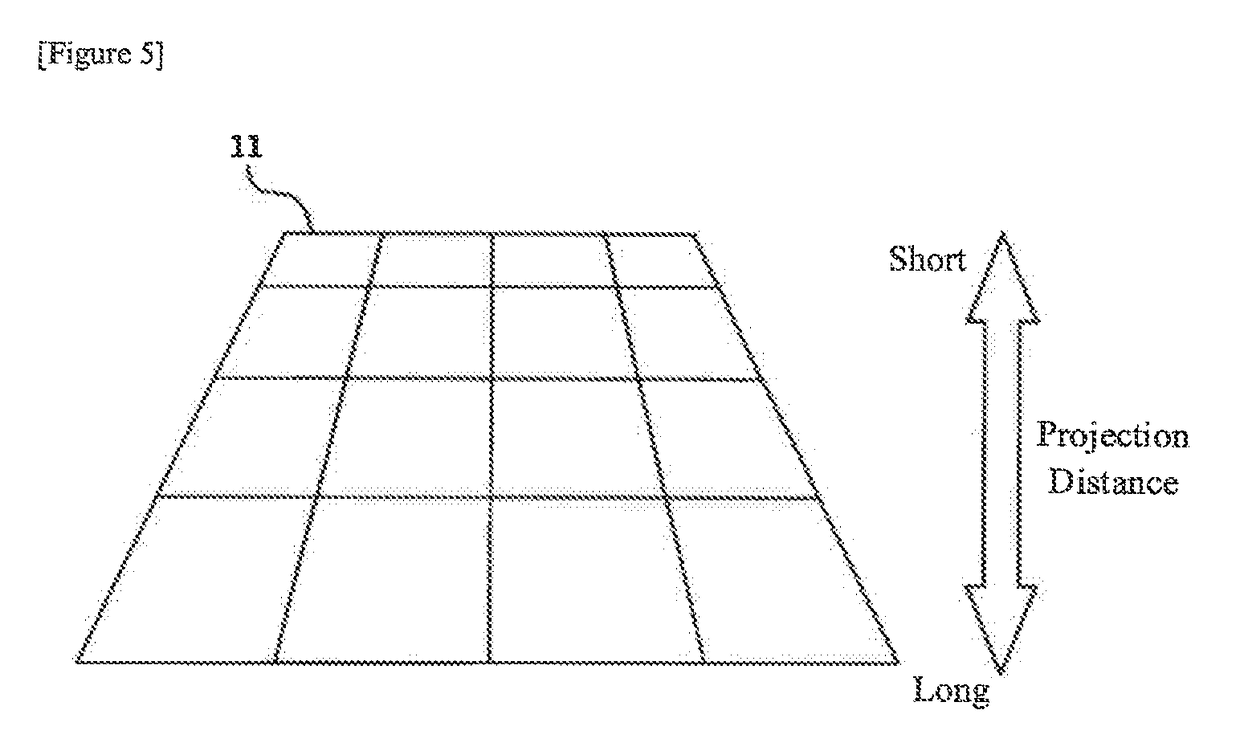Projector and focus adjustment method
a technology of projector and focus, applied in the field of projector, can solve the problems of increased device size, reduced focus region, increased cost and increased device size, etc., and achieve the effect of increasing device size and cos
- Summary
- Abstract
- Description
- Claims
- Application Information
AI Technical Summary
Benefits of technology
Problems solved by technology
Method used
Image
Examples
modification 1
(Modification 1)
[0084]Optimal focus point detection circuit 7 demarcates image-forming surface 12a into a plurality of areas and sets a weighting coefficient for each area. The information necessary for this setting of weighting areas is registered in advance. Optimal focus point detection circuit 7 extracts areas in which pixels having the same correction coefficient are arranged in proximity and acquires for each weighting area the number of pixels of the extracted area. Optimal focus point detection circuit 7 computes a value obtained by multiplying the number of pixels that was acquired for each weighting area by the weighting coefficient and takes the sum total value as the number of pixels of the extracted area.
[0085]FIG. 11 gives a schematic representation of the weighting areas and an extracted area. In this example, image-forming surface 12a is demarcated into central area 20 and peripheral area 21. The weighting coefficient of central area 20 is “1,” and the weighting coef...
modification 2
(Modification 2)
[0090]When detecting the optimal focus point, optimal focus point detection circuit 7 may set a permissible error range ±σ to the distortion correction data value. For example, in the example of FIG. 7, when an area is detected in which pixels for which the correction coefficient value (absolute value) is X / A are in proximity, optimal focus point detection circuit 7 detects an area in which pixels for which the correction coefficient value (absolute value) is within the range of (X / A)±σ are in proximity. Here, permissible error range ±σ is preferably set with consideration given to, for example, the depth of focus of projection lens 5.
modification 3
(Modification 3)
[0091]The screen may also be a surface that is not flat, such as a solid object. As an example, FIG. 12 and FIG. 13 give schematic representations of cases in which a projector is arranged to project obliquely from above upon a screen that is provided with a surface that is not fiat. FIG. 12 is a view as seen from the upper surface of projector 100, and FIG. 13 is a view as seen from the side surface of projector 100.
[0092]In FIGS. 12 and 13, screen 300 is provided with a convex surface in which two surfaces are joined together in a “V” shape and is arranged such that this convex surface is positioned on the side of projector 100. Projection distance d1 from illumination lens 100a to central portion 300a of the upper side of screen 300 is the shortest projection distance, and projection distance d2 from illumination lens 100a to both ends 300b of the lower side of screen 300 is the greatest projection distance.
[0093]FIG. 14 gives a schematic representation of the rel...
PUM
 Login to View More
Login to View More Abstract
Description
Claims
Application Information
 Login to View More
Login to View More - R&D
- Intellectual Property
- Life Sciences
- Materials
- Tech Scout
- Unparalleled Data Quality
- Higher Quality Content
- 60% Fewer Hallucinations
Browse by: Latest US Patents, China's latest patents, Technical Efficacy Thesaurus, Application Domain, Technology Topic, Popular Technical Reports.
© 2025 PatSnap. All rights reserved.Legal|Privacy policy|Modern Slavery Act Transparency Statement|Sitemap|About US| Contact US: help@patsnap.com



